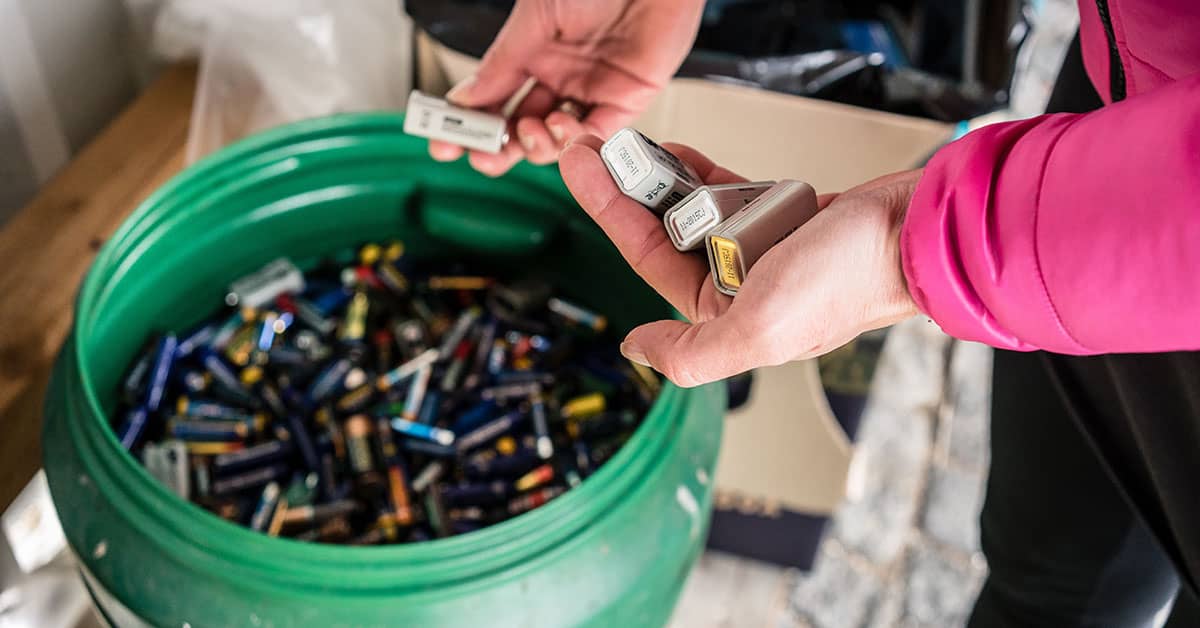Universal Waste – federal vs state
Date Posted: 05/02/2022

The universal waste regulations streamline hazardous waste management standards for specific, federally designated wastes that are commonly generated. The rule is designed to reduce the amount of waste going to landfills, to encourage recycling and proper disposal of certain common hazardous wastes, and to reduce the regulatory burden on businesses that collect and/or transport these wastes.
40 CFR part 273 defines the type of materials that fall under the universal waste categories and specify in what situations that material can be considered a universal waste. The federal regulations identify five specific categories of materials that can be managed as universal wastes:
- batteries,
- pesticides,
- mercury-containing equipment,
- lamps, and
- non-empty aerosol cans.
With EPA encouragement, each state authorized for the Resource Conservation and Recovery Act (RCRA) universal waste rulemaking petition process is allowed to develop and run their own hazardous waste/universal waste programs as an alternative to direct EPA management. The state adoption of the 1995 Universal Waste Rule is optional; thus, each state manages universal waste differently.
Authorized states can create different standards, except for batteries due to the Battery Management Act, but they must be equivalent to the federal regulations. These states may include additional wastes beyond the federally recognized universal wastes, if certain EPA established criteria is upheld. If an authorized state adds a new hazardous waste to its universal waste program, the management of that waste under the universal waste regulations would only be allowed within that state and in any other authorized states that added it to their universal waste programs as well.
Currently 50 states and territories have been granted authority to implement the RCRA universal waste program, which ensures national consistency and minimum standards while providing flexibility to states in implementing universal waste rules. Not all authorized state universal waste programs include the five specific federal universal waste categories, but some states have added to the federal universal wastes. The following chart shows an example of the complexities and differences between a few of these authorized states. Note that an “x” marked in a column indicates that the state universal waste program includes that federal universal waste.
| State | Batteries | Pesticides | Mercury-containing lamps | Lamps | Aerosol cans | State additions |
| Arizona | x | x | x | x | x | |
| Connecticut | x | x | x | Thermostats; used electronics | ||
| Louisiana | x | x | x | x | Electronics; antifreeze | |
| Texas | x | x | x | x | x | Paint and paint-related waste |
| Washington | x | x | x |
Universal waste regulations serve as a tool to encourage proper management of hazardous waste. Knowing the specifics of a particular state’s universal waste program can be overwhelming. If you are a generator of a federal universal waste, a necessary first step is to assess your waste streams and identify any waste batteries, lamps, pesticides, mercury-containing equipment, or non-empty aerosol cans to determine if they are eligible for your state’s universal waste program.
How Safety Management Suite Can Help
Staying in compliance with Federal environmental regulations is tough enough but gets even more challenging when states are authorized to further expand on specific regulations. In addition to providing federal regulatory assistance, our experts can often help drill down to the state level and add some clarity. Submit your Universal Waste question through the Expert Help tool. The Subject Matter Experts who support the J. J. Keller® SAFETY MANAGEMENT SUITE will provide a response within one business day.
E-mail Newsletter
Sign up to receive the weekly EHS Insider email newsletter for safety articles, news headlines, regulatory alerts, industry events, webcasts, and more.